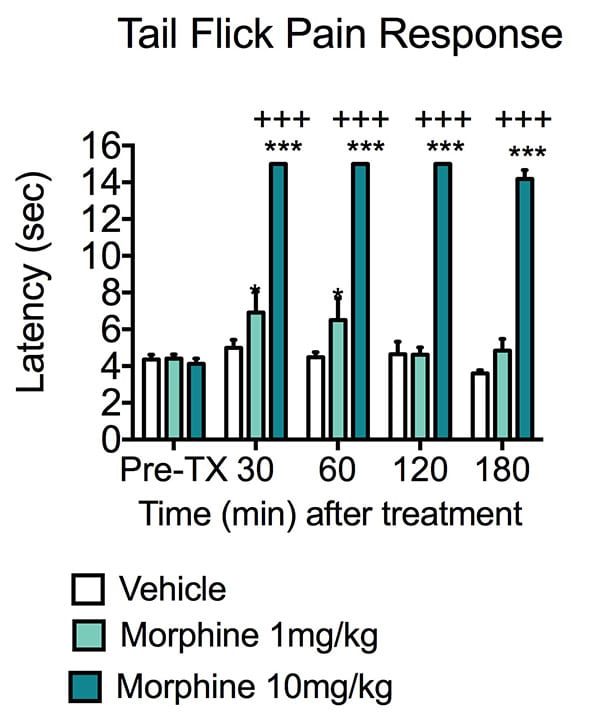Tail Flick Test
Discover how Melior’s unique phenotypic screening platforms can uncover the untapped value of your candidate therapeutic
Hyperalgesia is a condition of enhanced sensitivity to painful stimuli. The Tail Flick Test measures the latency to thermal pain response and effectiveness of analgesics.
A number of clinically approved pharmacological agents have been demonstrated to delay the onset of heat sensitivity upon exposure to heat including opioids and GABA potentiators.
Ready to get started or looking for a custom model?
Contact us today for more information about our bespoke research models and to discuss how we can help you answer your unique research questions.
Morphine Activity in a Rat Tail Flick Test. Thirty minutes prior to drug administration, rats are held on a pre-heated tail flick apparatus. Once a tail flick response is observed, latency (seconds) to pain response was recorded, with a 15-second time-out period. After recording pre-treatment (Pre-TX) data, rats were dosed with vehicle, and two concentrations of morphine (1mg/kg or 10mg/kg) and tested at various time points. Rats dosed with 10 mg/kg morphine had significantly longer pain latency responses compared to vehicle. Data are mean ± SEM; *p<0.05; ***p<0.001 compared to vehicle, +++p<0.001 compared to morphine 1mg/kg dose.
The Tail Flick Test is typically run in an acute mode (study completed in one day) by evaluating test articles after a single administration. The variability is relatively low and statistical significance may be achieved with group sizes of about 8 to 10 animals. It can be performed in both mice and rats. Since it is non-invasive it can be easily incorporated several times over the course of a chronic study.

